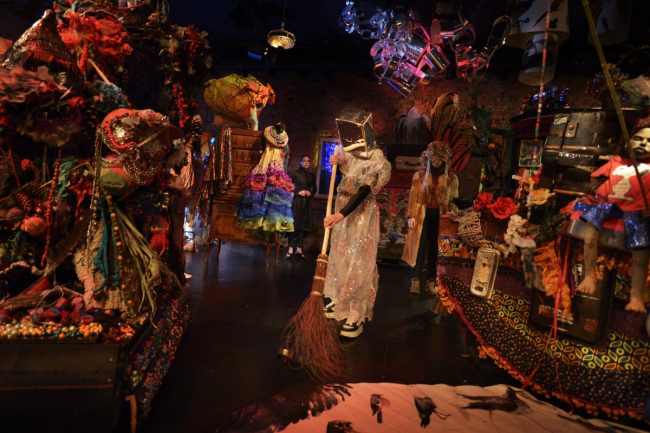Descripción de la Exposición
Working with basic staples such as cardboard, masking tape, and wall paint, Carlos Bunga creates sculptures, objects, and monumental installations that attach themselves to the architecture of the site. His flexible handling of these versatile materials allows him to realize his ideas without assistants. As Bunga sees it, cardboard in particular is recommended by connotations such as impermanence, memory, and fragility.
The dialogue with architecture, the interplay with the human body and its scale, and the function of the site—be it a chapel or a museum—are factors that inform the conception of his works. The artist’s own body is integral to the art: Bunga is interested in the process, in change—to his mind, there is no such thing as stasis.
Bunga’s formal vocabulary is modular and repetitive and lets him respond to existing elements: he often mirrors and replicates characteristic architectural features such as pillars, grid floor patterns, or other formal particulars, creating a sort of echo that overlies the existing architecture. His interventions engender interferences and “disturbances,” disrupting the smooth functioning of buildings to direct our attention to things as they are in themselves. Grappling with the objects, he alters them and is changed in turn. His goal is to create a plane of consciousness that enables us to grasp the essence of things.
Bunga began his career in painting, from which he literally stepped out into the third dimension: he shattered what he felt to be the cramped confines of the canvas by building pictorial objects from which he broke free in performative actions. Key sources of inspiration for these early works were the art of the Japanese Gutai Group, which sought to devise new forms of creative expression in the wake of the Second World War, and Gordon Matta-Clark, whose splitting buildings slated for demolition signaled a novel sculptural radicalism.
Deconstruction is almost as salient in Bunga’s works as construction: some of his elaborately crafted installations are short-lived, meant to be smashed to pieces in his performances. His approach to creation and destruction vividly illustrates the continual process of becoming and disintegration. In the performances, the artist becomes one with his work in an almost mystical union.
Drawings accompany the large installations, but they do not serve as aids to construction; the artist makes them after the main work to which they relate, as a medium of reflection in which thought processes become manifest.

Actualidad, 15 sep de 2021
#Loquehayquever: 10 Solo Shows para no perderse en el arranque otoñal
Por GUSTAVO PéREZ DIEZ
Desde la primera gran presentación en Brasil de la obra del chileno Alfredo Jaar en SESC Pompéia, pasando por la antológica dedicada al gran artista uruguayo Rafael Barradas, en el ...

Exposición. 11 abr de 2025 - 28 sep de 2025 / Museo Guggenheim Bilbao / Bilbao, Vizcaya, España

Formación. 08 may de 2025 - 17 may de 2025 / Museo Nacional Centro de Arte Reina Sofía (MNCARS) / Madrid, España